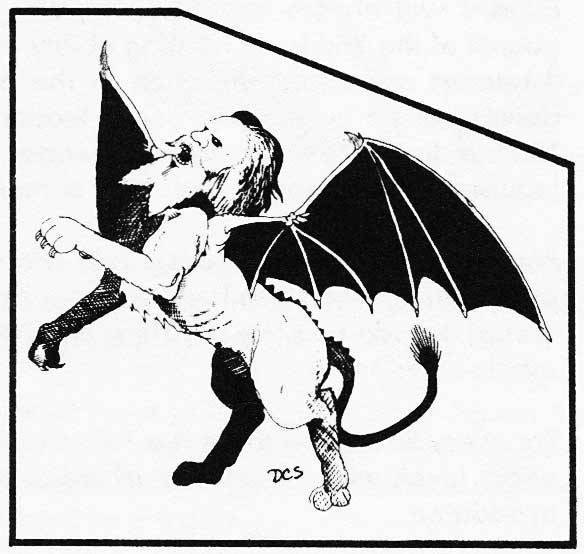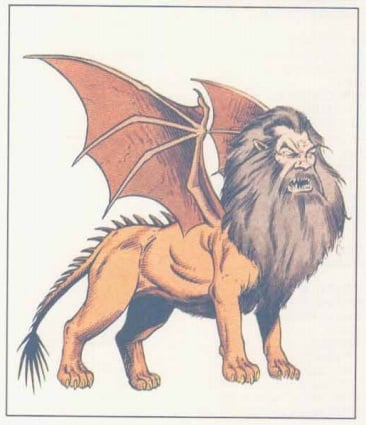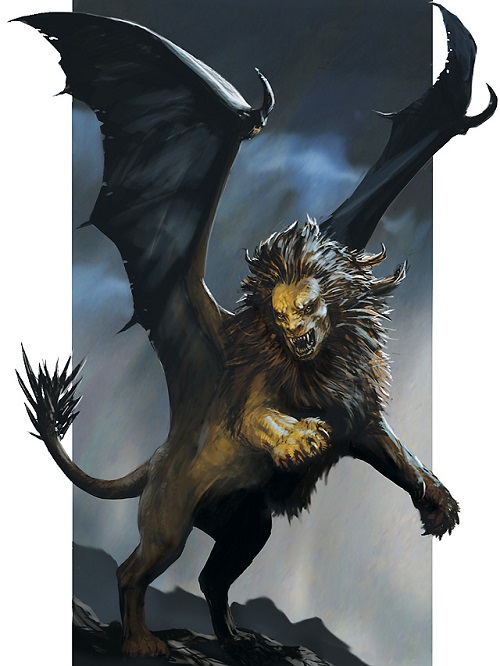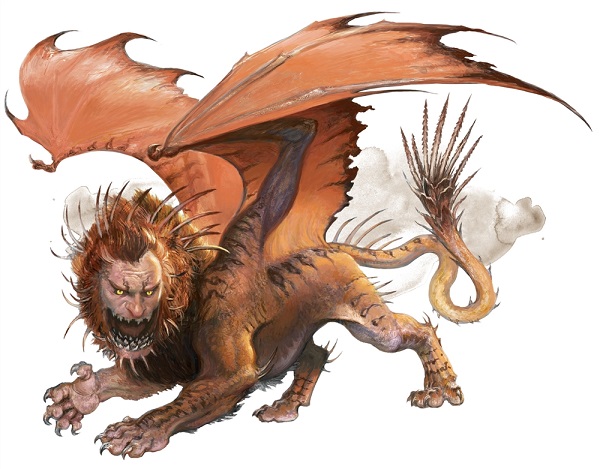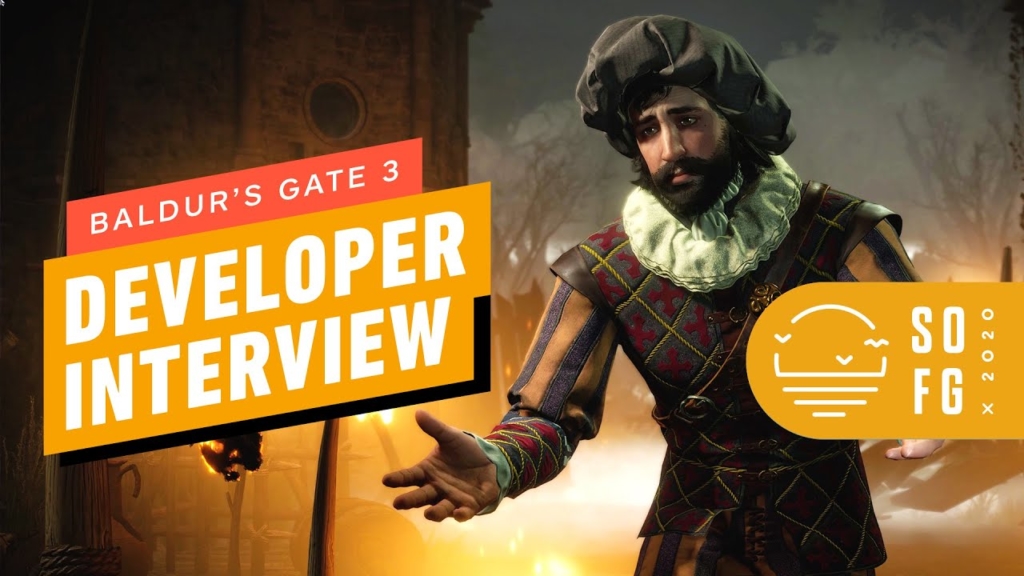Monster Spotlight: The Man-eating Manticore
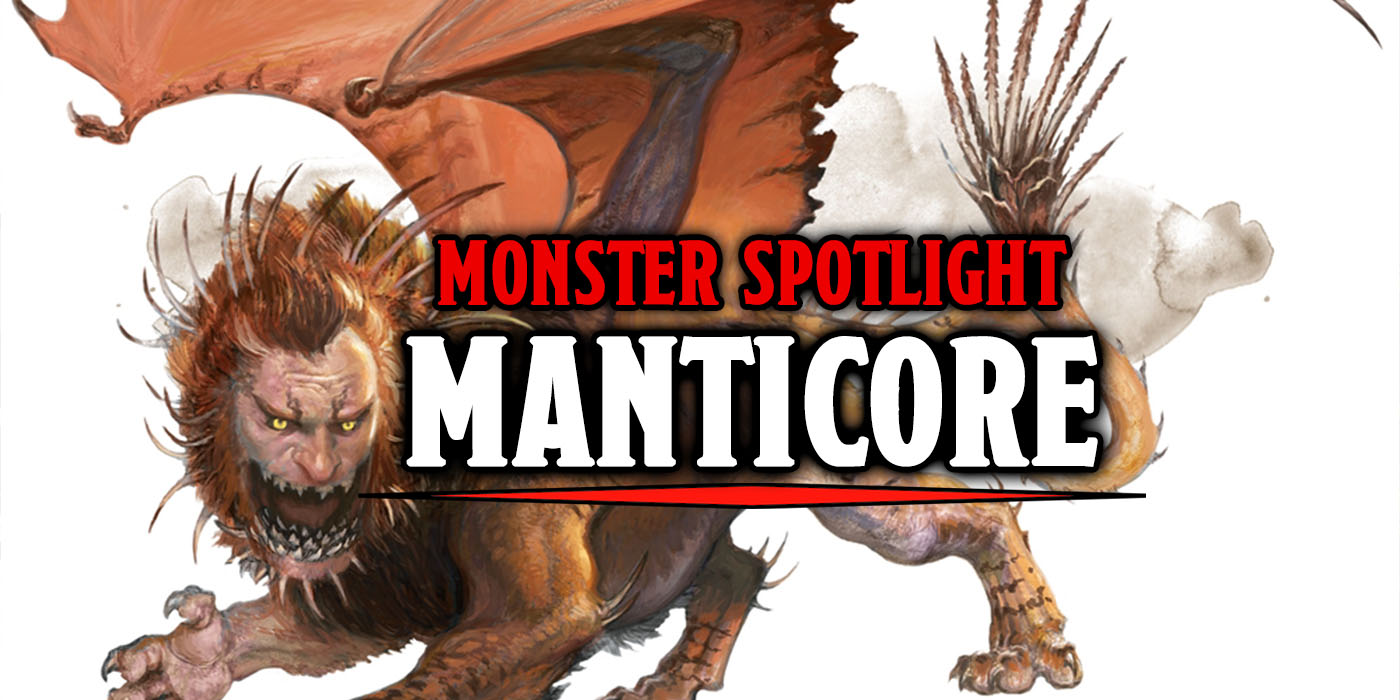
With the face of a man, the body of a lion, and a tail that shoots poison darts at you, manticores are the horrible hodgepodge monster of the D&D world.
Manticores are ancient mythological beings, dating back to Early Middle Persian civilization. They have a human’s head on the body of a lion with a tail of poisonous quills, though there have been minor changes between myths depending on who you ask. Sometimes their tail looks like a scorpions, sometimes they’ll be depicted with wing, but the body and face are always key to their look. The manticore has also always been considered a fearsome and terrifying beast, taking it’s name from the early middle Persian words for “man” (mardya) and “to eat” (khowr). The manticore is literally a man eater.
First Edition
The first version of the D&D manticore was fairly classic but with the addition of dark bat wings. They prefer living in warm places, can often be encountered out in the wild as they actively hunt for humans to eat, and can attack by spraying spikes from their tail with the range of a light crossbow. Despite this however, they’re not particularly strong, intelligent, or hard to hit.
Second Edition
In second edition manticores make good use of their bat wings by attempting to stay in flight as much as possible when engaged in an outdoor encounter. Combined with their up-to four volleys of projectile tail spikes, this can be a very effective strategy that limits the damage they can take while continuing to attack. Unfortunately for the noble manticore, 2E also describes them as “clumsy fliers” who cannot use their teeth in the air. At some point they’ll have to land and come within stabbing distance.
Third Edition
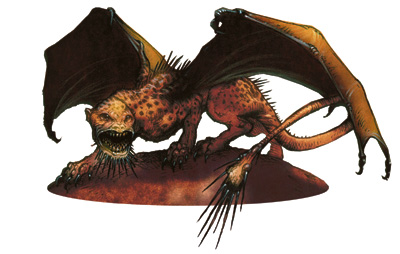 Starting at the art I was concerned about the third edition manticore. When I got to their page in the book I flipped back and forth a few times to find the mantifore art because clearly that thing can’t be it. Where’s the human face? What kind of lion’s body is that? The description says that they have the head of a “vaguely humanoid beast” and a lion’s body… but that image tells a very different story. Besides my personal aesthetic gripes, there are very few changes between the second and third edition manticores but now they get a +4 racial bonus to spot checks in daylight.
Starting at the art I was concerned about the third edition manticore. When I got to their page in the book I flipped back and forth a few times to find the mantifore art because clearly that thing can’t be it. Where’s the human face? What kind of lion’s body is that? The description says that they have the head of a “vaguely humanoid beast” and a lion’s body… but that image tells a very different story. Besides my personal aesthetic gripes, there are very few changes between the second and third edition manticores but now they get a +4 racial bonus to spot checks in daylight.
Fourth Edition
Likes sharks, manticores have multiple rows of teeth, so sometimes one will get left with a victim of an attack and the manticore will just grow a replacement. Also like sharks, manticores are terrible negotiators. Previous editions have listed the average manticore intelligence fairly low, but 4E explains that they are only smart enough to speak a few key words and phrases in common and have no patience for creatures who try and speak with them. Sometimes goblins will in over a manticore with food and gifts, but their loyalty is seldom long lived.
Fifth Edition
Fifth edition manticores are a little better at teamwork than their earlier edition ancestors. They’ll hunt in packs when need be and share the meal, and will work for extended periods of time with intelligent monsters who treat them well and provide regular food. Manticores also now have sworn enemies, or at least common territorial rivals in chimeras, griffons, perytons, and wyverns.
Have you encounters a manticore in game? How did you fare against the tail spikes? If not, what’s your favorite myth or story that manticors have shown up in? Let us know in the comments!
Happy Adventuring!

